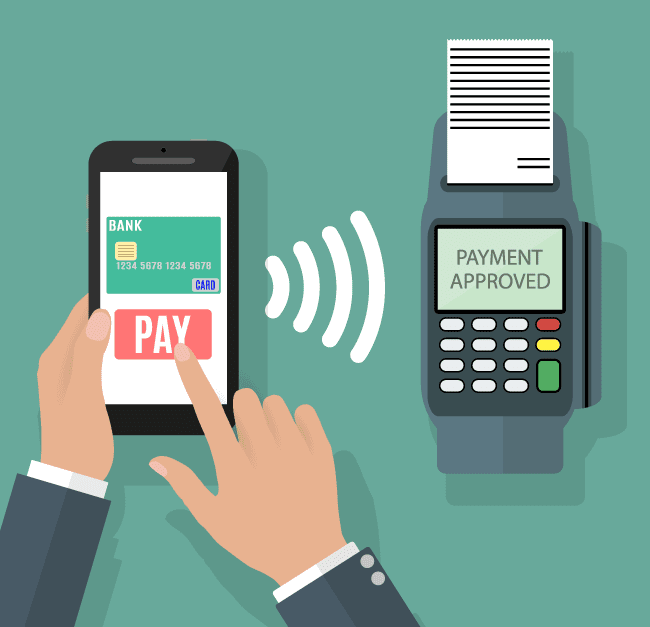Money Going Mobile: Mobile Payments and the Virtual Wallet
I can’t remember the last time I paid a friend back in cash.
That thought was an eye opener to me. I’m only 22 years old and I’m watching cash go the way of the home phone and cable television. It’s there, but hardly anyone uses it anymore.
Now, I can settle almost all my debts with about as much effort as it takes to comment on a friend’s Facebook page. All I need is a phone.
I downloaded Venmo, a mobile money transfer service owned by PayPal, a couple years ago, and since then, I rarely make a trip to the bank and even more rarely leave there with cash in my pocket. The interface on Venmo is similar to social media apps. You just find your friend, punch in a few numbers on your phone, and two days later the money magically appears in their account. You can request or send money to anyone with the Venmo app.
The mobile money transfer makes splitting the cost of dinner, groceries or utilities so simple that I almost never need cash in my wallet. Apparently, I’ve joined the cashless society without even noticing.
Millennials Love Mobile Payments
And I’m not alone. Here are some of the current and projected numbers regarding consumers and mobile payments:
The majority of mobile payment users in the U.S. are just over 30, have an average income of $70K and spend twice as much on retail purchases as non-users.
Use of mobile wallets is expected to surpass credit cards and debit cards among U.S. consumers by the year 2020.
U.S. Consumers will spend $75 billion on mobile payments in 2017. That number is expected to jump to $503 billion by 2020, a growth of 570%!
As you might expect, 72% of mobile payments are made by Millennials and Gen Xers.
Businesses Slow to Commit to Mobile Payments
Mobile payments use Near Field Communication (NFC) for tap-and-pay, which encrypts data and only authorized devices like a POS terminal have access. Digital wallets use virtual card numbers and one-time authorization tokens, so your credit card information isn’t even used in the transaction. Passcodes and fingerprint scanners have ensured that a lost or stolen phone can’t be used for a transaction.
Regardless of whether consumers come around, it is up to retailers to decide when the idea of a mobile wallet will be feasible. It’s going to take some time for retailers to replace their POS terminals with one that has NFC technology, especially after many of them just invested in chip-card readers (EMV).
Still, it seems Digital wallets are the future of transactions. Tap-and-pay will overtake physical cards one day. That day may be sooner than you think.
Mobile payment have grown year after year with a projected $721.4 billion in mobile transactions around the world in 2017. VISA believes that by 2020 consumers will rely primarily on mobile payments to make purchases.
Big Names Betting on Mobile Payments
It may take a few years for all consumers to get comfortable with the idea, but digital wallets are here and are the way of the future. Here is a look at some of the choices, if you’re interested.
Apple Pay
Apple Pay is integrated on iPhones (iPhone 6 and up) and Apple Watches for mobile purchases at stores using NFC, and is available in online shopping as well with the new MacBook Pro Touch Bar and iPad.
Credit and Debit cards are loaded into your Wallet (an app on your home screen). Store rewards cards can also be uploaded onto your Wallet as well, and iCloud makes sure they stay up to date across devices. Instore, you simply tap your phone against the POS and provide your passcode or Touch ID.
Samsung Pay
Samsung Pay is available on the Galaxy S6 and Note 5 and newer models. It has the same NFC connection as Apple and Android Pay as well as Magnetic Secure Transmission (MST), which really sets it apart. MST works on virtually any POS terminal that you can swipe your credit card. You simply hold your phone to the card reader and it communicates as if it were a credit card swipe.
Android Pay
Android Pay is Google’s digital wallet for Android devices and is available for phones running Android 4.4 or later and support NFC. It uses NFC for in-store purchases and can also be used for purchases in apps and online.
These are options offered by phone companies, but there are other third party offerings from tech companies, credit card companies, banks and even retailers. PayPal has a very popular digital wallet, VISA Checkout and MasterPass, Wells Fargo and Chase, as well as Walmart Pay all provide options for mobile payments.
Are Mobile Payments Secure?
Still, 35% of Millennials don’t use mobile payment apps. I’ve never made an actual purchase with my phone. Neither has 56% of America’s consumers.
The leap from transferring money between friends, to using a digital wallet isn’t that far off, so what is holding me and the rest of America back?
Security.
That was the No. 1 concern with 70% of U.S. consumers who are worried about the loss of funds or identity theft. Consumers are reluctant to put their information out there, and that’s probably a good thing. It was true when online shopping first made an appearance, and it is true now.
It reminds me of when a brand new roller coaster opens up at a local theme park. Your first thought is no way is that thing safe. But enough people get on board, and when they turn out okay, you jump on board, too.
I was hesitant to get into online shopping – I still think twice about putting my information online – but handing out my credit card number has become as routine as swiping my card at the register.
The concern over security is understandable considering how many data breaches we hear about in the news, but there isn’t any reason to think a mobile payment is any less safe than using a plastic card. Either way there is risk.
Convenience Best Reason to Go Mobile
So why use a digital wallet?
The clear-cut answer is convenience. Having everything in one place (your phone) is efficient and allows everything else to work together and quicker. I’ll give you an example. I went to the movies a couple of weekends ago with some friends. Half of us had purchased tickets on our phone. The rest were going to buy tickets at the theater.
The problem was we got to the theater just as the movie was starting. The ones who wisely purchased ahead and had tickets loaded onto their digital wallets, went straight to the doorman and into the theater. The rest of us had to wait in line at the ticket window and missed the first 10 minutes of the movie.
For the first time in my life I felt like a dinosaur.
I’ve stood in line at the grocery store behind the guy whose $158.68 worth of stuff just took five minutes to ring up. Now he wants to write a check. And he’s got to ask the clerk for a pen. And then he’s got to find his driver’s license. And then he forgot to sign the check.
Nobody wants to be behind that guy!
Get a digital wallet, would ya!
I am.

6 MINUTE READ
Home » InCharge Blog »
Sources:
- The Pew Charitable Trusts (2016, May 26) Who uses Mobile Payments? Retrieved from http://www.pewtrusts.org/en/research-and-analysis/issue-briefs/2016/05/who-uses-mobile-payments
- VISA (2016) Buying Into Mobile. Retrieved from https://usa.visa.com/dam/VCOM/Visa%20Everywhere/infographics/Visa%20-%202020%20-%20buyingintomobile_infographic_web.jpg
- Baker, E. (2016, May) The Mobile Payments Report. Retrieved from https://www.businessinsider.com/intelligence/research-store
- Martin, James (2016, June 7) 7 Reasons Why Mobile Payments Still Aren’t Mainstream. Retrieved from http://www.cio.com/article/3080045/payment-processing/7-reasons-mobile-payments-still-arent-mainstream.html
- Brown, Mike (2017, April 21) Best Mobile Payment Apps – Survey & Report. Retrieved from https://lendedu.com/blog/best-mobile-payment-apps

















